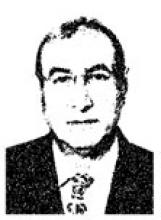You are here
Stethoscope nation
Jul 09,2017 - Last updated at Jul 09,2017
Last week, my wife and I took our son to hospital for a minor surgery, which was fortunately completely successful. That said, we were impressed with the number and competence of Jordanian doctors, women as well as men, and the number of guest patients. We had fun spotting the different accents of Syria, Iraq, Yemen, Sudan and Gulf countries.
I found this remarkable because in the 1950s, Jordan was a hotbed of malaria, with a child mortality rate of over 120 per 1,000 people and a severe shortage of healthcare professionals. Today, malaria has been eliminated, infant mortality dropped to 22 per 1,000, and the country has more physicians, nurses, pharmacists and dentists per thousand people than most MENA countries.
Fascinated, I started to read about Jordan’s potential as a medical tourism destination and discovered that the World Bank considers Jordan to be the top medical tourism destination in the MENA region, with an estimated income from medical tourism of more than $1 billion in 2007.
In that year, more than 250,000 guest patients sought treatment in Jordan; among them, Iraqis, Palestinians, Sudanese, Canadians, and citizens from the US and the UK.
This seemed highly gratifying until I read that global medical tourism is estimated at 11 million tourists and hundreds of billions — yes, billions — of dollars each year.
Moreover, experts predict that the industry will grow by up to 25 per cent a year over the next 10 years. This means that, without undermining Jordan’s achievement, the country needs to take a serious look at what it can do to ride the tide of medical tourism.
Obviously, Jordan should look beyond the region and target countries that export medical tourists.
For instance, about a million Americans travel, mostly to Mexico, every year because of the high cost of treatment and surgery at home, seeking treatment for cancer mainly, but also for plastic surgery, dental surgery, gastric bypasses and orthopaedic surgery.
If Jordan is to attract a significant proportion of them, it needs to develop a cluster of industries around medical tourism.
Examples abound of countries that successfully developed clusters around a strong industry, which in this case would include healthcare, pharmaceuticals, and the hospitality and transportation industries.
In addition, a serious marketing campaign would be needed to create a Jordanian brand for excellence in medical services. But delivering on this promise would require two more elements.
One is a well-studied, transparent system of accountability that protects patients against medical malpractice or exploitation by healthcare or other service providers, without being so intrusive as to stifle the industry. Also, Jordan needs to constantly upgrade its services through partnerships in medical research and development.
The sector is advanced, but the challenge would be to bring it up to global state-of-the-art standards, which would enhance the Jordanian brand for excellence.
This would attract to Jordan not only large income from medical tourism, but also large investments.
Will we be able to maximise our share of this growing and lucrative sector?













